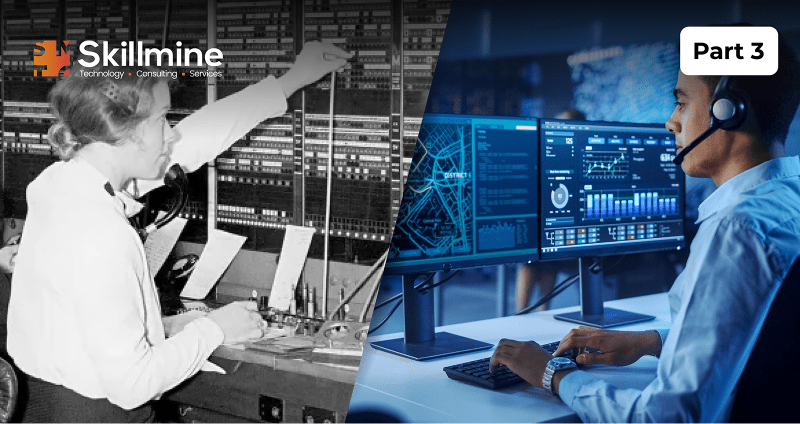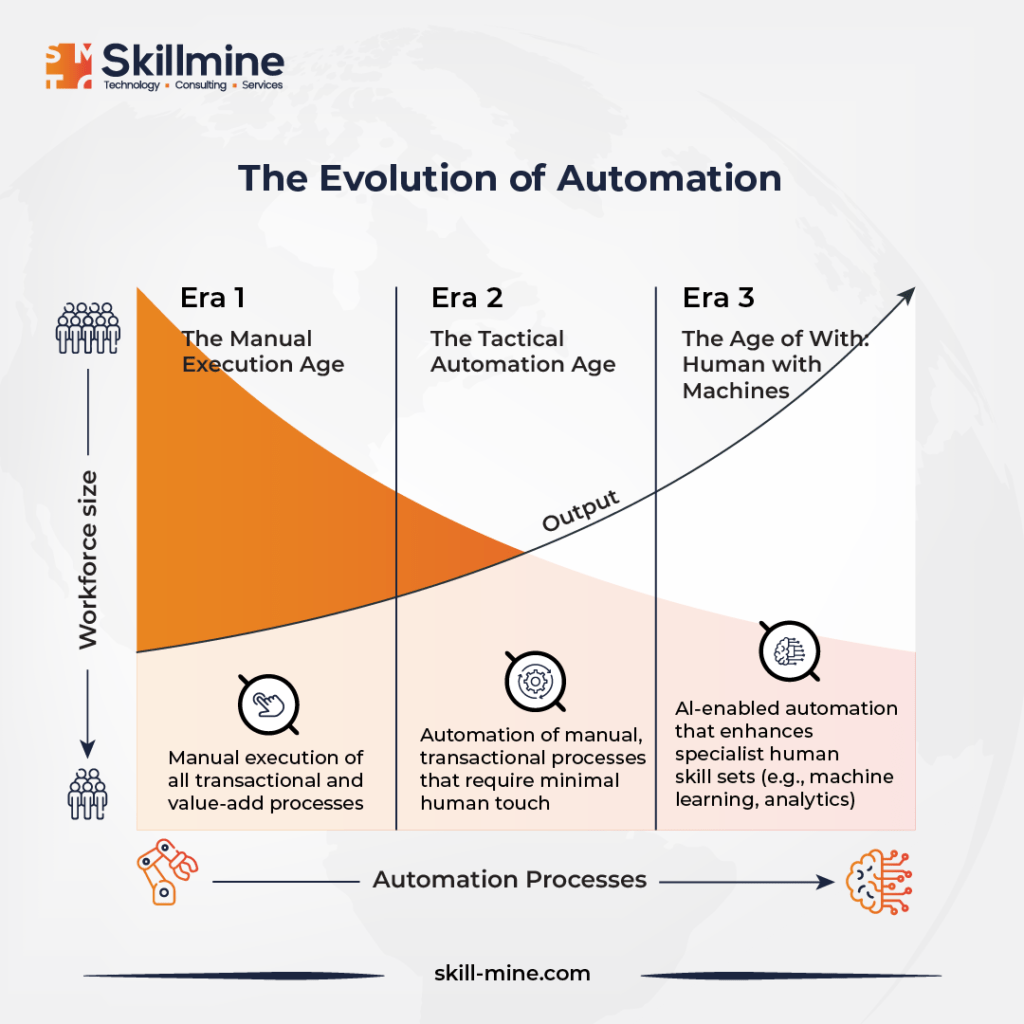The Evolution of Automation: From Manual Tasks to Intelligent Systems- Part 3

In this age of automation, to fully embrace its benefits, while fostering human-machine collaboration, organizations must adopt a holistic approach to their workforce that incorporates digital workers. This entails updating their organizational chart to include digital workers alongside human employees. It also involves embracing a forward-thinking perspective on automation that goes beyond traditional concepts of enterprise software or outsourced solutions.

Intelligent Automation (IA), also referred to as cognitive automation, harnesses automation technologies such as Artificial Intelligence (AI), Business Process Management (BPM), and Robotic Process Automation (RPA) to optimize and expand decision-making capabilities across organizations. IA streamlines processes, liberates resources, and enhances operational efficiencies through diverse applications. For instance, an automotive manufacturer might employ IA to accelerate production or mitigate the risk of human error, while a pharmaceutical or life sciences company could leverage intelligent automation to cut costs and optimize resource utilization in repetitive tasks.
Intelligent Automation
The primary component of intelligent automation is AI, which employs machine learning and intricate algorithms to analyze both structured and unstructured data. This facilitates the development of a knowledge repository and enables predictive analytics based on this data—a core aspect of IA’s decision-making prowess.
The second element of intelligent automation is BPM, also known as business workflow automation. BPM automates workflows to bestow greater agility and consistency upon business processes. Widely adopted across various industries, BPM streamlines operations and enhances interactions and engagement.
The third pillar of IA is RPA, which employs software robots or bots to execute back-office tasks like data extraction or form completion. These bots leverage AI insights to handle more intricate tasks and scenarios.
The integration of these components engenders a transformative solution that optimizes processes, simplifies workflows, and ultimately enhances the customer experience.
Components of Intelligent Automation
Human-Machine Collaboration in the Era of Intelligent Automation
According to research by the University of Gottingen, human-machine teams hold a distinct advantage in automating production logistics. In their study, researchers delegated transport responsibilities to a human team, a machine team, and a mixed team. These tasks simulated the use of vehicles like forklifts for delivering production materials to an automotive plant. Contrary to the researchers’ expectations, the human-machine team emerged as the most coordinated and efficient, experiencing the fewest accidents.
Best Practices to Ensure Human-Machine Collaboration
- Revamp work environments to accommodate teams consisting of individuals, machinery, and data.
- Re-evaluate established work practices and norms within our roles to cultivate inclusivity and trust among both humans and machines.
- Assist machines in interpreting human gestures, emotions, and cognitive processes, and provide them with appropriate information or feedback.
- Offer training opportunities and encourage experimentation for leaders and teams to gain insights, dispel misconceptions, and cultivate shared experiences to foster trust.
- Identify novel avenues for human-machine interaction and coordinate pilot projects or prototype initiatives within an environment conducive to iterative improvement and subsequent scalability.
Furthermore, machines could be programmed to fulfil their respective roles. While machines may excel at recognizing emotions and displaying empathy, enabling them to respond to information in ways that resonate with humans poses a greater challenge. If companies were to develop algorithms that encourage machines to exhibit more inclusive and cooperative behaviours, they could significantly enhance human job satisfaction.
Ethical Implications of Widespread Automation
Embedding moral values into AI systems presents formidable challenges. Diverse cultural and societal norms entail varying ethical standards, complicating the task of devising a universal moral framework for AI. Moreover, moral discernment often hinges on context and subjective interpretation.
Another pressing concern pertains to bias inherent in AI algorithms. Should developers inadvertently infuse their own biases or prejudices into the code, these biases might perpetuate societal inequities or discriminatory practices when the system autonomously renders decisions.
Furthermore, privacy emerges as a crucial ethical consideration in AI discourse. Given AI’s extensive collection of personal data for analysis and decision-making, apprehensions arise regarding the ethical utilization of this information without infringing upon individuals’ privacy rights.
Conclusion
In conclusion, advocating for the ethical implementation of automation necessitates acknowledging its profound impact on labour and the individuals engaged in it. Throughout history, people have placed significant value on meaningful work, and this sentiment is expected to persist amid an increasingly automated landscape.
Technology can elevate our standard of living while prompting reflection on how we allocate our time and energy. Therefore, it is imperative that we invest effort today in devising equitable and sustainable solutions to address the social challenges that are likely to arise in the future.
Looking for expert technology consulting services? Contact us today.

